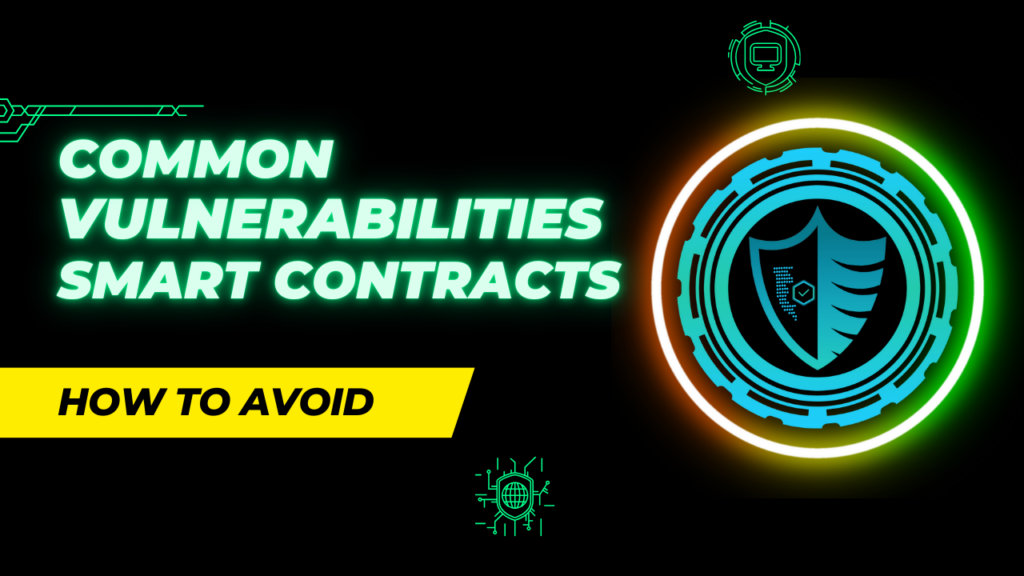Common Vulnerabilities in Smart Contracts and How to Avoid Them

While smart contracts help in altering and enhancing industries through automating and implementing the deals, the task of verifying and validating these has become even more crucial. But as with anything else, smart contracts are not impervious to exploits. This is because even a single mistake in the code will culminate into catastrophic results including loss of money, or loss of reputation for the project.
Here, the author discusses the numerous pitfalls inherent to smart contracts as well as the steps that the developers and auditors can take to avoid them to realize trustworthy dApps.
Reentrancy Attack
Reentrancy attack is where a function calls another untrusted contract before it functions is done computing its state. It allows the called contract to make recursive calls back to the original function, due to the fact that the original function’s state has not changed yet.
Example: The real-life example that came into the limelight is the reentrancy attack that involved the DAO in 2016 which led to the loss of 60 million Ether.
Prevention:
Check that states change before external functions are called.
Relatively popular is the check-effects-interactions pattern that checks that any external interaction takes place after the internal state has been changed.
Integer Overflow and Underflow
Smart contracts frequently involve mathematical operations and these operations if not well managed, may result to overflow or underflow. For instance, when performing the operation 0 – 1 an underflow occurs, and the result becomes the largest representable value for the given data type.
Prevention:
Implement safe math libraries as OpenZeppelin’s SafeMath that contain functions which help to check for out of bound conditions on arithmetic operations.
Unchecked Return Values
In Ethereum’s programming language for smart contracts called Solidity, external calls return true or false for success or failure. If these return values are not checked, then the contract might go on executing even though an error was thrown in the course of the call.
Prevention:
There is need to always check on the return values of the external function calls to make sure that the desired result is obtained.
The first type of attack is the Denial of Service (DoS) attacks.
DoS attacks are those wherein an attacker will make some tampering with the contract so that it will not perform its intended purpose or becomes unresponsive, often through the use of excessive calls or inadequate gas for computation. For example, an attacker might absorb all the gas to perform particular activities thus denying the contract its tasks.
Prevention:
Do not practice reasoning that can be some how twisted to burn many gallons of fuel.
Minimize the use of the loop or recursive calls that cannot be tested with internal code without waiting for the input.
Front-Running Attacks
In decentralized exchanges or platforms that process transactions, front-running is a type of attack whereby the attacker observes the transactions that are in a queue and processes their in front of the other willing to take advantage of current stock market swings.
Prevention:
Put in place approaches such as the commit-reveal kind which conceals details of a transaction until it is complete.
Set accomplishments of passing ceilings on gas prices or implement other disincentives in order to eliminate front-running activities.
The Role of Auditors in Preventing Vulnerabilities
These vulnerabilities are effectively managed by auditors before the smart contract is put in operation. Besides, they can look at the code from different perspectives and with using the code review, analysis, and security testing tools and find potential problems and suggest the optimizations. They also aid in the reduction of problems with the interaction of the contract in the usage of the blockchain.
Conclusion
Smart contracts are one of the most promising tools of the current era, although their security has to be approached seriously. Experience of ordinary and advanced susceptibilities and its control is critical to developers and auditors equally. But sticking to the best practices, passing audits and fulfilling such obligations investors and other members of the blockchain ecosystem will be able to develop securely and stably.

